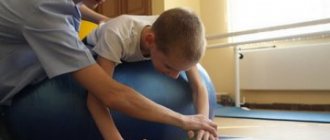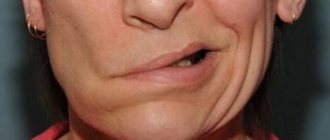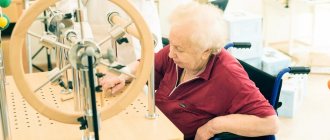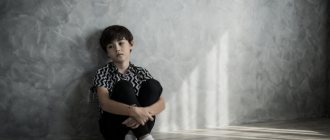Cerebral palsy is a group of diseases in which motor functions and posture are impaired. This is due to a brain injury or a disorder of brain formation. This disease is one of the most common causes of permanent disability in children. Cerebral palsy occurs in approximately 2 cases per thousand people.
Cerebral palsy causes reflex movements that a person cannot control and tightness of the muscle, which can affect part or all of the body. These disorders can range from moderate to severe. There may also be intellectual disability, seizures, visual and hearing impairment.
Accepting the diagnosis of cerebral palsy can sometimes be a difficult task for parents.
Causes
Cerebral palsy (CP) is the result of injury or abnormal development of the brain. In many cases, the exact cause of cerebral palsy is not known. Damage or disruption of brain development can occur during pregnancy, birth, and even during the first 2 to 3 years after birth.
- Possible causes of cerebral palsy during pregnancy or birth may be genetic problems, infections or health problems in the mother or fetus during pregnancy, or complications associated with labor and delivery. Any of these problems can affect the development of the fetus, blood supply, and the provision of the fetus with the necessary nutrients that it receives through the blood. For example, systematic hypoglycemia can lead to the development of cerebral palsy.
- One possible cause of cerebral palsy may be prematurity associated with early birth (preterm birth), and therefore underdevelopment of the brain. Babies born too early are at high risk of bleeding in the brain (intraventricular hemorrhage). A condition called periventricular leukomalacia, which causes damage to the white matter of the brain, is also more likely in babies born prematurely than in those born full term. Both conditions increase the risk of cerebral palsy. • Possible causes of cerebral palsy during the first 2 or 3 years after birth are usually related to brain damage from a serious illness such as meningitis; brain injury due to an accident or brain hypoxia.
Prevention
The cause of cerebral palsy (CP) is sometimes unknown. But certain risk factors have been identified and their relationship with the incidence of cerebral palsy has been proven. Some of these risk factors can be avoided. Following certain conditions during pregnancy can help reduce the risk of brain damage to the fetus. These recommendations include:
- Complete nutrition.
- No smoking.
- Do not come into contact with toxic substances
- Regularly see your doctor.
Recommendations after the birth of the child:
- Minimize injury from accidents
- Determine neonatal jaundice
- Do not use substances containing heavy metals (lead)
- Isolate the child from patients with infectious diseases (especially meningitis)
- Immunize the child in a timely manner.
Symptoms
Even when the condition is present at birth, symptoms of cerebral palsy (CP) may not be noticed until the child is between 1 and 3 years of age. This happens due to the growth characteristics of the child. Neither doctors nor parents may pay attention to disturbances in the child’s motor sphere until these disturbances become obvious. Children may retain newborn reflex movements without age-appropriate development of movement skills. And sometimes the first to pay attention to a child’s underdevelopment are nannies. If cerebral palsy is severe, then the symptoms of this disease are already detected in the newborn. But the appearance of symptoms depends on the type of cerebral palsy.
The most common symptoms of severe cerebral palsy are
- Swallowing and sucking problems
- Faint scream
- Cramps.
- Unusual child poses. The body can be very relaxed or very strong hyperextension with arms and legs spread out. These positions are significantly different from those that occur with colic in newborns.
Some problems associated with cerebral palsy become more obvious over time or develop as the child grows. These may include:
- Muscle wasting in injured arms or legs. Problems in the nervous system impair movement in the injured arms and legs, and muscle inactivity affects muscle growth.
- Pathological sensations and perceptions. Some patients with cerebral palsy are very sensitive to pain. Even normal everyday activities such as brushing your teeth can be painful. Pathological sensations may also affect the ability to identify objects by touch (for example, distinguish a soft ball from a hard one).
- Skin irritation. Drooling, which is common, can lead to irritation of the skin around the mouth, chin and chest.
- Dental problems. Children who have difficulty brushing their teeth are at risk for gum disease and tooth decay. Medicines used to prevent seizures may also contribute to the development of gum disease.
- Accidents. Falls and other accidents are risks associated with impaired coordination of movements, as well as in the presence of convulsive attacks.
- Infections and somatic diseases. Adults with cerebral palsy are at high risk of heart and lung diseases. For example, in severe cases of cerebral palsy, problems arise with swallowing and when choking, some of the food enters the trachea, which contributes to lung diseases (pneumonia).
All patients with cerebral palsy (cerebral palsy) have certain problems with body movement and posture, but many babies do not show signs of cerebral palsy at birth and sometimes only nannies or caregivers are the first to pay attention to deviations in the child’s movements that contradict age criteria. Signs of cerebral palsy may become more obvious as the child grows. Some developing disorders may not become apparent until after the child's first year. The brain injury that causes cerebral palsy does not appear for a long time, but the effects may appear, change, or become more severe as the child gets older.
The specific effects of cerebral palsy depend on its type and severity, level of mental development and the presence of other complications and diseases.
- The type of cerebral palsy determines the child's motor impairment.
Most patients with cerebral palsy have spastic cerebral palsy. Its presence can affect both all parts of the body and individual parts. For example, a child with spastic cerebral palsy may have symptoms primarily in one leg or one side of the body. Most children usually try to adapt to impaired motor functions. Some patients can even live independently and work, requiring only occasional assistance from others. In cases where there are impairments in both legs, patients require a wheelchair or other devices that compensate for motor functions.
Complete cerebral palsy causes the most severe problems. Severe spastic cerebral palsy and choreoathetoid cerebral palsy are types of complete paralysis. Many of these patients are unable to care for themselves due to both motor and intellectual impairments and require constant care. Complications such as seizures and other long-term physical consequences of cerebral palsy are difficult to predict until the child is 1 to 3 years old. But sometimes such predictions are not possible until the child reaches school age, and in the process of studying, communicative intellectual and other abilities can be analyzed
- The severity of mental impairment, if any, is a strong predictor of daily functioning. Slightly more than half of patients who have cerebral palsy have some degree of intellectual disability. Children with spastic quadriplegia usually have severe cognitive impairment.
- Other conditions, such as hearing impairments or problems, often occur with cerebral palsy. Sometimes these disorders are noted immediately; in other cases they are not detected until the child gets older.
In addition, just like people with normal physical development, people with cerebral palsy experience social and emotional problems throughout their lives. Since their physical defects exacerbate problems, patients with cerebral palsy need the attention and understanding of other people.
Most patients with cerebral palsy survive to adulthood, but their life expectancy is somewhat shorter. Much depends on how severe the form of cerebral palsy is and the presence of complications. Some patients with cerebral palsy even have the opportunity to work, especially with the development of computer technology, such opportunities have increased significantly.
Cerebral palsy is classified according to the type of body movement and posture problem.
Spastic (pyramidal) cerebral palsy
Spastic cerebral palsy is the most common type. A patient with spastic cerebral palsy develops stiff muscles in some parts of the body that are unable to relax. Contractures occur in damaged joints, and the range of movements in them is sharply limited. In addition, patients with spastic cerebral palsy have problems with coordination of movements, speech disorders and disturbances in swallowing processes.
There are four types of spastic cerebral palsy, grouped according to how many limbs are involved. Hemiplegia - one arm and one leg on one side of the body or both legs (diplegia or paraplegia). They are the most common types of spastic cerebral palsy.
- Monoplegia: Only one arm or leg is impaired.
- Quadriplegia: Both arms and both legs are involved. Usually in such cases there is damage to the brain stem and, accordingly, this is manifested by swallowing disorders. In newborns with quadriplegia, there may be disturbances in sucking, swallowing, weak crying, and the body may be weak or, on the contrary, tense. Often, upon contact with a child, hypertonicity of the torso appears. The child may sleep a lot and not show interest in his surroundings.
- Triplegia: Either both arms and one leg or both legs and one arm are caused.
Non-spastic (extrapyramidal) cerebral palsy
Non-spastic forms of cerebral palsy include dyskinetic cerebral palsy (divided into athetoid and dystonic forms) and ataxic cerebral palsy.
- Dyskinetic cerebral palsy is associated with muscle tone that ranges from moderate to severe. In some cases, there are uncontrollable jerks or involuntary slow movements. These movements most often involve the muscles of the face and neck, arms, legs, and sometimes the lower back. The athetoid type (hyperkinetic) type of cerebral palsy is characterized by relaxed muscles during sleep with minor twitching and grimacing. If the muscles of the face and mouth are involved, there may be disturbances in the process of eating, drooling, choking on food (water) and the appearance of inappropriate facial expressions.
- Ataxic cerebral palsy is the rarest type of cerebral palsy and affects the entire body. Pathological movements occur in the torso, arms and legs.
Ataxic cerebral palsy is manifested by the following problems:
- Body imbalance
- Impaired precise movements. For example, the patient cannot reach the desired object with his hand or perform even simple movements (for example, bringing a cup directly to the mouth). Often only one hand is able to reach the object; the other hand may shake as it tries to move the object. The patient is often unable to button clothes, write, or use scissors.
- Coordination of movements. A person with ataxic cerebral palsy may walk with too long steps or with their feet spread wide apart.
- Mixed cerebral palsy
- Some children have symptoms of more than one type of cerebral palsy. For example, spastic legs (symptoms of spastic cerebral palsy related to diplegia) and problems with facial muscle control (symptoms of dyskinetic CP).
- Total body cerebral palsy affects the entire body to varying degrees. Complications from cerebral palsy and other health problems are most likely to develop when the entire body is involved rather than isolated parts.
Cerebral palsy in adults and massage
Erica is 39, works as a massage therapist and has two children. Erica suffers from spastic diplegia, a common type of cerebral palsy. She was born ten weeks premature and was adopted as an infant. Unlike many other premature babies, she soon did not catch up with her peers in height and at the age of eighteen months she was diagnosed with cerebral palsy.
“Back in 1979, my parents were advised to send me to a boarding school for disabled children,” she says. – Last year I ran 4 cross-country races and two marathons. I proved everyone they were wrong."
WHAT IS CEREBRAL PALSY?
Cerebral palsy is a group of diseases that develop as a result of damage to the brain at an early stage of human development: in utero, during childbirth or in early infancy. Every year in our country, approximately 10,000 people are diagnosed with cerebral palsy. Despite the enormous efforts made by the healthcare system in attempts to reduce the incidence of cerebral palsy, it remains consistently high for several decades.
This may be because many more premature babies are surviving today than ever before. Premature babies are especially at risk of suffering nerve tissue damage or developing brain abnormalities that lead to the development of cerebral palsy.
The official definition of the concept of “cerebral palsy” is as follows: “a group of chronic non-progressive symptom complexes of motor disorders secondary to lesions or abnormalities of the brain that arise in the perinatal (peripartum) period. False progression is noted as the child grows. Approximately 30-50% of people with cerebral palsy have intellectual impairment. Movement disorders are often accompanied by sensory and perceptual disturbances, epilepsy and secondary musculoskeletal disorders.”
The condition, first documented in the 1860s by British surgeon William Little, was later defined as spastic diplegia, a form of cerebral palsy. It was believed that the cause of the development of this disease lies in violations of the order of childbirth, however, as it turned out, less than 10 percent of cases of cerebral palsy are associated with birth trauma. Much more often, cerebral palsy develops as a result of abnormalities in brain development, complications of intrauterine infection, Rh incompatibility, exposure to toxins, or bleeding in the brain due to vascular malformation or arterial hypertension in the mother. Postnatal causes include head injuries, jaundice and convulsions of various origins. Most often, cerebral palsy develops in children with low birth weight (less than 2.5 kg) and premature babies (less than 37 weeks in the womb).
FORMS OF CEREBRAL PALSY
The terms used to describe the types of cerebral palsy indicate the motor symptoms and what part of the body they affect. Scientists identify the following forms of cerebral palsy:
• “Ataxic”: problems with balance and coordination.
• “Athetoid”: involuntary writhing movements of the muscles of the face, trunk, arms and legs.
• Prefix “-di”: symptoms affect the upper (less often) or lower body (more often).
• “Hemi-”: symptoms affect the left or right side of the body.
• “-Paresis”: Weakness.
• “-Plegia”: Paralysis.
• “Spastic”: Pathological muscle tension, flexor muscles are stronger than extensor muscles.
• Tetra: Symptoms affect all four limbs.
In spastic diplegia, as diagnosed by Little, the patient experiences spastic paralysis of the upper or lower body. Erica suffers from problems with her legs and, in addition, she has involuntary movements of her arms (even in a relaxed state).
“I think that’s why I’m so good at massage,” she says. –When I exert a lot of force to control my hands during a massage, I am at the same time applying very intense pressure while working with the client. My height is only 150 centimeters and, besides, I
I’m very thin, and clients tell me that my arms are stronger than some men.”
Many people with cerebral palsy experience difficulties unrelated to motor control. Cognitive disorders are observed in 2/3 of patients. Half of them suffer from epileptic seizures. Growth retardation coupled with spinal deformities such as hyperkyphosis, hyperlordosis and scoliosis is common.
Problems with facial muscle control can lead to difficulty communicating, uncontrollable drooling, and serious skin problems. Also, due to impaired muscle control, many patients develop incontinence. People with cerebral palsy who are able to walk often experience constant spastic tension in the leg muscles, which leads to the development of the gait pattern characteristic of cerebral palsy, in which the legs cross like scissors when walking.
Most of these problems develop over time, even though cerebral palsy itself does not progress. Since a large number of these symptoms appear unsightly from a social point of view, people with cerebral palsy are often socially isolated, which leads to a worsening of their condition.
CEREBRAL PALSY IN ADULTS
Until the mid-twentieth century, most children with cerebral palsy did not survive into adolescence. Today, 65-90 percent of people with cerebral palsy live much longer into adulthood and beyond, but they are often susceptible to premature aging. Some body systems, such as the respiratory and cardiovascular systems, do not work properly and physical activity wears out these systems very quickly. Of course, an increase in the life expectancy of patients with cerebral palsy is an excellent result, but along with it, scientists and doctors have faced new questions that require answers.
Cerebral palsy has always been perceived as a childhood disease and all treatment strategies and methods have been developed for children. Physiotherapy, occupational therapy, surgery and pharmacological drugs for the treatment of cerebral palsy have been developed with the goal of achieving the highest possible level of independence in affected children. However, the strategies created did not take into account the possible needs of a person with cerebral palsy at 30, 40 or 50 years of age.
Surveys and studies conducted among adults living with cerebral palsy and without cognitive impairment have revealed very alarming trends. Adult patients with cerebral palsy gradually lose access to medical services precisely at the moment when all the likely long-term complications of their disease are just beginning to appear. Not all people with cerebral palsy lose the ability to walk, but many develop early degenerative joint disease between the ages of 23 and 27. At this age, the pain becomes so unbearable that people stop walking.
About 77 percent of adults with cerebral palsy have problems with muscle spasticity, 80 percent have muscle contractures, 18 percent experience constant pain and 18 percent are completely disabled. 24 percent work full time.
Another study, in which researchers followed children with cerebral palsy as they grew up for seven years, found that more than half had decreased ability to walk independently, and their frequency and intensity of pain increased.
Balance problems are a leading cause of decreased walking ability.
The main symptoms observed in adults with cerebral palsy are pain that is difficult to treat with painkillers, weakness, balance problems and fatigue. In addition, many experience numbness and loss of sensation in the limbs, memory loss, difficulty breathing and loss of vision. Researchers believe that treatment strategies developed for children are completely irrelevant for adults. It is obvious that the treatment of cerebral palsy for adults requires serious rethinking in order to prolong and improve the quality of life of adults living with this serious disease.
THERAPY FOR ADULTS
I am very upset by the fact that science currently knows very little about how to make the life of an adult living with cerebral palsy fulfilling. The greatest difficulty at the moment is the variety of forms of cerebral palsy. Some people may suffer from movement disorders without experiencing any cognitive difficulties, while others may live with severe cognitive impairment and epilepsy but have no motor skills.
His impairments are mild. Obviously, each specific case requires its own special strategy. Currently, doctors and scientists are just beginning to explore this aspect of cerebral palsy, but some progress is already taking place.
For example, previously, if a child was referred for surgery to correct the position of bones and muscle contractures, it was considered necessary to perform both operations simultaneously. Relatively recently, scientists came to the conclusion that these procedures should be carried out separately at a certain interval in order to extract the maximum benefit from the process of growth and development of the child. Orthopedic surgeons are now wondering about changing the shape of the hip prosthesis, since the prostheses used previously were prone to post-operative displacement when a person reached adulthood.
Scientists and doctors continue their work on long-term treatment strategies for cerebral palsy, the main goal of which is to improve the quality of life and independence of adult patients.
In Erica's case, her right Achilles tendon was surgically increased at age 7, thumb surgery was performed at age 14, and damaged intervertebral discs were repaired at age 22. Two years ago she was treated for kidney cancer, and this year Erica broke her leg and tore a tendon, which seriously affected her quality of life.
“I’ve been on crutches for several months now. I no longer run and have taken up swimming. It was the only thing that saved me from the depression of never feeling so bad,” she says
MASSAGE FOR ADULTS LIVING WITH CEREBRAL PALSY
Children with cerebral palsy have freer access to the entire range of medical services, including massage, than adults. Surveys have shown that most children with cerebral palsy attend massage sessions. Many massage therapists are willing to work with such children, however, when it comes to adults, things are different. There are significantly fewer massage therapists willing to work with adults living with cerebral palsy. There are a large number of adults with cerebral palsy living in our country, and some of them are at risk of losing the ability to walk.
Massage can help manage common symptoms of cerebral palsy such as acute and chronic pain, weakness, fatigue and balance problems. The video, which I will attach in the comments to the article, shows how a few minutes of massage, performed, mind you, in the cold and through several layers of clothing, can significantly improve the ability of a patient with cerebral palsy to walk for some time.
Massaging people with cerebral palsy is associated with certain risks. Patients can use drugs that affect the massage process: Botox injections, muscle relaxants, painkillers, and so on.
Also, people with cerebral palsy often undergo surgery. The main difficulties, of course, are related to the problem of communication between the massage therapist and the client and the lack of sensitivity in the limbs. However, the benefits of massage for people with cerebral palsy are much more important than the risks. Massage works with proprioceptors, which increases the efficiency of muscle function and improves balance, which is the most important factor affecting a person's ability to walk. We can help a person with cerebral palsy increase stamina, relieve pain and fatigue, and in addition, a massage therapist can support a person who is socially isolated. It seems to me that the most valuable thing about massage for patients with cerebral palsy is that during the session people feel that they are being worked with, and not just looked after. This is a real rarity for people living with serious chronic illnesses.
“People with cerebral palsy know their bodies very well,” says Erica. “And that’s why it’s very useful to talk to them during a session.” Trust them."
Ruth Werner
Diagnostics
Symptoms of cerebral palsy may not be present or detected at birth. Therefore, the attending physician observing the newborn must carefully monitor the child so as not to miss symptoms. However, you should not over-diagnose cerebral palsy, since many motor disorders in children of this age are transient. Often, the diagnosis can only be made several years after the birth of the child, when movement disorders can be noticed. Diagnosis of cerebral palsy is based on monitoring the physical development of the child, the presence of various deviations in physical and intellectual development, test data and instrumental research methods such as MRI. Diagnosis of cerebral palsy includes:
- Gathering information about the baby's medical history, including details about the pregnancy. Quite often, the presence of developmental delay is reported by parents themselves or it is revealed during professional examinations in children's institutions.
- A physical examination is necessary to identify signs of cerebral palsy. During a physical examination, the doctor evaluates how long the baby's newborn reflexes last compared to normal periods. In addition, muscle function, posture, hearing function, and vision are assessed.
- Tests to detect a latent form of the disease. Developmental questionnaires and other tests help determine the extent of developmental delays.
- Magnetic resonance imaging (MRI) of the head, which may be done to identify abnormalities in the brain.
The complex of these diagnostic approaches makes it possible to make a diagnosis.
If the diagnosis is unclear, additional tests may be ordered to evaluate the condition of the brain and to rule out possible other diseases. Tests may include:
- Additional questionnaires.
- Computed tomography (CT) of the head.
- Ultrasound examination of the brain.
Assessment and management of cerebral palsy
After cerebral palsy is diagnosed, the child must be further examined and other diseases that may be present simultaneously with cerebral palsy be identified.
- Other developmental delays in addition to those already identified. Developing abilities need to be assessed periodically to see if new symptoms such as speech delay appear as the child's nervous system is continually developing.
- Intellectual delay can be detected using certain tests.
- Convulsive episodes. Electroencephalography (EEG) is used to look for abnormal activity in the brain if a child has a history of seizures.
- Problems with feeding and swallowing.
- Vision or hearing problems.
- Behavior problems.
Most often, a doctor can predict many of the long-term physical aspects of cerebral palsy when the child is between 1 and 3 years old. But sometimes such predictions are not possible until the child reaches school age, when deviations can be detected during learning and the development of communication abilities.
Some children need repeat testing, which may include:
- X-rays to detect hip dislocations (subluxations). Children with cerebral palsy usually undergo several x-rays between the ages of 2 and 5 years. In addition, x-rays may be ordered if there is pain in the hips or if there are signs of hip dislocation. It is also possible to order a spinal x-ray to identify deformities in the spine.
- Gait analysis, which helps identify disorders and adjust treatment tactics.
Additional examination methods are prescribed if necessary and indicated.
Treatment and rehabilitation of children with cerebral palsy
Can cerebral palsy be cured? It all depends on the type and depth of the brain damage that led to it, as well as on the timing of onset and the chosen treatment tactics. In some cases, complete healing is possible, because the child’s body has enormous compensatory capabilities. Early, intensive and adequate treatment can help him with this very well.
In more severe cases, we are no longer talking about a complete cure, but about rehabilitation - measures aimed at the maximum possible restoration and compensation of impaired functions and improving the quality of life, and the prevention of various complications (irreversible changes in bone, muscle tissue and ligamentous apparatus; epileptic seizures, speech disorders, mental retardation).
The success of treatment and rehabilitation of children with cerebral palsy depends not only on the doctor’s competence, which is manifested in a correct diagnosis and individually selected treatment. It is largely determined by the parents’ readiness for long and intensive work, combining a variety of methods.
Treatment and rehabilitation of children with cerebral palsy in Moscow
At Dr. Zager's clinic in Moscow, pediatricians, osteopaths, homeopaths, and acupuncturists treat and rehabilitate patients with cerebral palsy from a very early age. The main principle is an individual approach to detecting disturbances in the functioning of all organs and systems and choosing the optimal way to compensate for them.
The methods of acupuncture, osteopathy, homeopathy (classical and resonance), used in our clinic for the treatment and rehabilitation of children suffering from cerebral palsy, are perfectly combined with each other and with physiotherapy, massage, physical therapy, and, if necessary, with drug therapy. The number, frequency and combinations of treatment courses are also selected individually.
Make an appointment
Treatment
Cerebral palsy is an incurable disease. But a variety of treatment methods help patients with cerebral palsy to minimize motor and other disorders and, thus, improve their quality of life. The brain injury or other factors that lead to cerebral palsy do not progress, but new symptoms may appear or progress as the child grows and develops.
Initial (initial) treatment
Exercise therapy is an important part of treatment that begins soon after a child is diagnosed and often continues throughout his or her life. This type of treatment may also be prescribed before diagnosis, depending on the child's symptoms.
Medications can help treat some of the symptoms of cerebral palsy and prevent complications. For example, antispasmodics and muscle relaxants help relax tight (spastic) muscles and increase range of motion. Anticholinergics can help improve limb movement or reduce drooling. Other medications may be used as symptomatic treatment (eg, anticonvulsants for seizures)
Permanent treatment
Permanent treatment for cerebral palsy (CP) focuses on continuing and adjusting existing treatment and adding new treatments as needed. Permanent treatment for cerebral palsy may include:
- Exercise therapy that can help a child become as mobile as possible. It may also help prevent the need for surgery. If the child has undergone surgical treatment, then intensive exercise therapy may be necessary for 6 months or more. Drug treatment must be constantly monitored in order to avoid possible side effects of drugs.
- Orthopedic surgery (for muscles, tendons, and joints) or dorsal rhizotomy (excision of nerves of damaged limbs), in the presence of severe problems with bones and muscles, ligaments, and tendons.
- Special orthopedic devices (braces, splints, orthoses).
- Behavioral therapy, in which a psychologist helps a child find ways to communicate with peers and this is also part of the treatment.
- Massage and manual therapy can also be used in the treatment of both the main symptoms of cerebral palsy and complications associated with impaired biomechanics of movement.
- Social adaptation. Modern technologies (computers) have made it possible to employ many patients with consequences of cerebral palsy.










